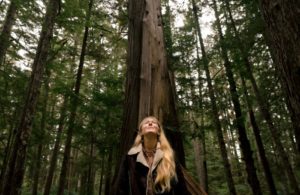Hello. I’m Alexis. This September I became a first-year student in Camosun College’s Indigenous Studies program.
The first lessons we moved through in week 1 were about introductions and the importance of them within First Nations culture. In each of my classes I was to compose an essay introducing myself, including information about where I was born, where I live now, what my heritage is, who my ancestors are, and how we came to be on this land.
This differed greatly from what I knew the word “introduce” to mean.
As a child I was taught that to “introduce myself” was to say: “My name is Alexis.” The end. On to the next person.

Since this is the first of many columns I will be writing for Nexus this year, columns loosely based around my life on Haida Gwaii and general ramblings of a young settler striving to become an ally, I feel that I should begin with an introduction. So, let’s try again:
My name is Alexis Koome and I was born and raised on Lekwungen (Songhees and Esquimalt) territory. I am a third- and fifth-generation settler here on Turtle Island, and nowadays I live on unceded Haida land.
On my father’s side I am Dutch. His parents travelled to so-called “Canada” from the Netherlands in the ’50s, gradually making their way west and settling on WSÁNEĆ territory in the ’60s.
My mother is English on both sides. Her grandfather lived down the street from us when I was a kid. He made and traded carving tools with local First Nations artists. Some of my earliest memories are of being in his house, staring up at elaborately carved masks.
I remember slipping away from the grown-ups. I felt pulled to gaze into the carefully sculpted eyes and mouths, noticing the different hair and colours of paint, sensing how each one had so much to say. Knowing even then that there were stories embedded into the creation of every piece.
My great grandfather Roy Smith passed away when I was about 13. I never saw those masks again; I never learned the story of how he came to live on Lekwungen land.
I’ve grown up unfortunately void of my own ancestral heritage. I am aware that tulips and windmills are “Dutch” things, and in my mother’s house 4 pm is “tea time,” but that’s the extent of it. There’s a vast gap in my knowledge of who I intrinsically am.
My childhood was so full of Indigenous culture that I never really noticed. I know that this culture is not mine, but I have great reverence and respect for it. I was raised that way, and for that I am thankful.
I look forward to sharing my words with you.

*loudly obnoxious at back of room:
Whoohoo!
???????♀️
Intros are hard.
You’re a tougher person than me.
Cheri
Haha, thanks Cheri! ?
And thank you for reading.
Alexis.